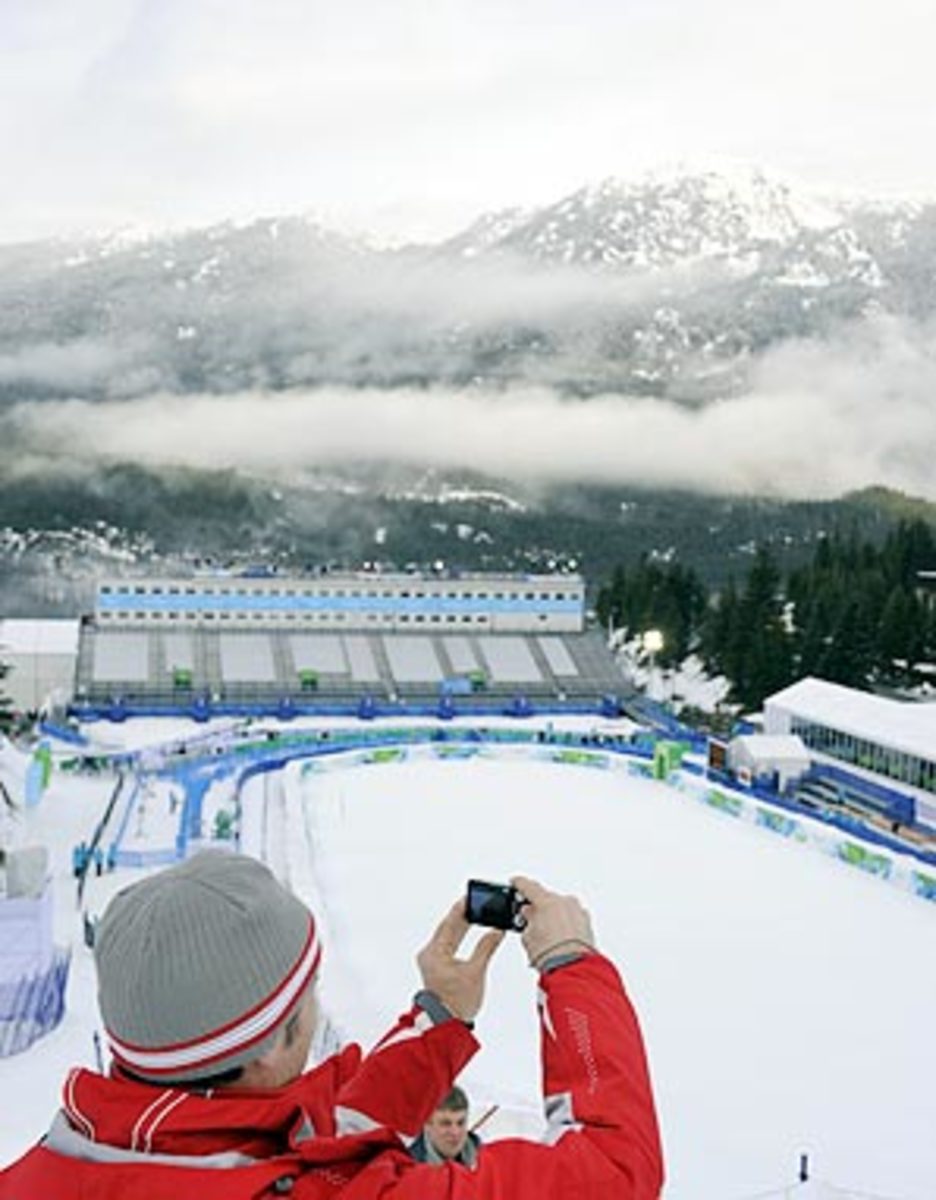El Niño's return just part of the weather wreaking havoc on Games


The last time it visited was four years ago, and right now it's embracing Vancouver. It's not the Olympic spirit, it's El Niño, the weather phenomenon that is helping to give Olympic organizers headaches by bringing warm air and rain from the South Pacific. The fog might be manna from heaven for American skier Lindsey Vonn, though, who wanted a few more days of cancelled training and races to let her bruised shin heal.
The current El Niño is the strongest since the winter of 1997-98, when World Cup ski events that came to Whistler were scrapped entirely due to fog, and the Whistler stop was subsequently removed from the World Cup. Still, those events were in November and December, whereas February tends to be less stormy in Vancouver. Olympic test events in February 2008 went off as scheduled. But that was before this latest incarnation of El Niño, which helped make for the warmest January on record. (January averaged 45 degrees, compared to 38 normally; golf course were open and daffodils were in bloom).
Here's how El Niño works: Though the Pacific Ocean appears flat, it is actually higher at its western end because the water there is warmer and thus less dense, so it piles up higher. The Pacific Ocean usually looks like a ramp slanted downward toward the Americas. Every three to seven years some of that warm water from the west comes barreling down the ramp toward the West Coast of the North America in a phenomenon called a "Kelvin wave." The warm water infuses the air off the West Coast with warm moisture and raises the air temperature, pushing the freezing point higher in the atmosphere. Early on Thursday, the freezing point over Vancouver was 1,700 meters, higher than even the top of the downhill runs, and much higher than Cypress Mountain, the site of freestyle skiing and snowboarding
Hence, precipitation has been falling as rain, not snow. That freezing altitude will fluctuate throughout the Games.
The downhill ski training postponements and cancellations thus far can't entirely be blamed on El Niño. Storms often break up over the water and shoot north and south ("split flow") of Vancouver in pieces. But right now a series of storm systems are making it inland. The current system that has transformed Vancouver and Whistler into a cloud forest has two cousins waiting in line for their turns, so the Alpine skiing venue is likely to remain encased in fog until at least early next week.
Besides Vonn, some Canadian athletes have been taking the weather with a subtle smile. Canadian skier Manny Osborne-Paradis, who has a shot to win the first Canadian gold ever on Canadian soil in the downhill Saturday, said that the cancellations are "better for us, because we're more familiar with the course ... it's nice to put a little pressure on the other guys."
While the delays in Alpine skiing might be an annoyance for most athletes, they should be fleeting. Whistler is chillier and higher than Vancouver and has a good base of snow, so a warm spell and spurts of rain won't be a big problem so long as the fog clears. On Thursday, American biathlete Tim Burke said the course conditions in Whistler where "hard and fast," and while the fringes of the venue were slushy, the competitive area was ready to go. The same can't be said for Cypress, where the freestyle skiing and snowboard events take place. Cypress is at lower elevation and El Niño, which is staying here in town throughout the Olympics, will be a month-long thorn in the side of Olympic organizers who will need to keep the dump trucks and helicopters at the ready to bring in more snow.
Some of the current weather remains unexplained. According to David Jones, a meteorologist at Environment Canada who is working at the Games, the El Niño in the winter of 2006-07 didn't stop Cypress from getting just under 10 feet of snow. "This isn't entirely El Niño," Jones said. "There's something else that we don't completely understand." He added that "El Niño isn't going away, but that doesn't mean we can't get a cold spell. But it is less likely, and it doesn't look likely for the next two weeks. We're just not getting enough cold air from the northern gulf of Alaska. El Niño loads the dice in favor of warmer weather systems."
Fortunately, though, this Olympics has more state of the art weather monitoring equipment than any before. There are 35 meteorologists working the Games, and they are joined by research scientists who have set up equipment that measures basics like wind speed and air moisture as well as more complex devices such as a wind profile, which does everything from measure basics like wind speed and air moisture to a "wind profiler," which looks vertically to detect wind speed and precipitation up to a mile-and-a-half above the ground. Every morning the research scientists and meteorologists get on a conference call "This stuff could become incredibly valuable if it becomes a game of picking windows when events should take place," Jones said. Olympians and organizers , of course, hope the equipment won't have to be used much longer.
